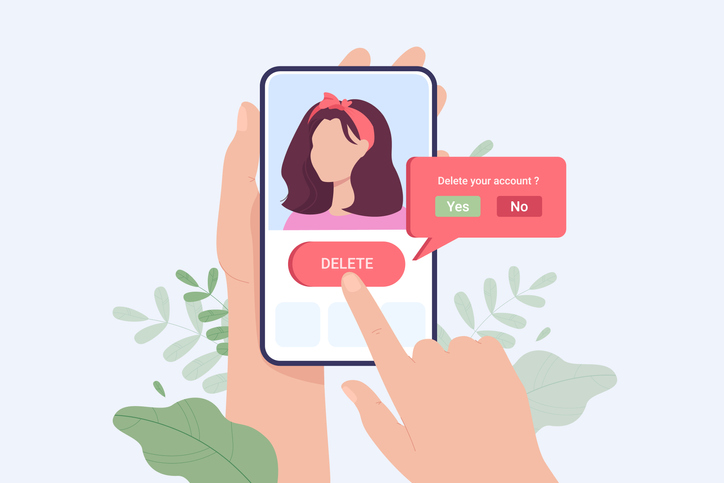
Photo by PCH-Vector/Getty Images
You may not realize this, but a lot of your personal information might be publicly available online to anyone who searches for you. This includes your name, age, address, phone number, email address, relationship status, and even court records. There are countless sites that provide this information, often for a small fee, and while it is possible to remove your info from them, doing so can be a bit of a challenge.
It can be shocking to visit a site like Spokeo, Intellius, MyLife, or BeenVerified—commonly known as data brokers or people-finding sites—and see all your information listed for anyone to see. But how are they even getting it?
“Often, it comes from scraping public records,” explains Gennie Gebhart, associate director of research at the Electronic Frontier Foundation. “For example, if you own a home, that real estate transaction is public record. They draw from all sorts of sources.”
They can also grab information from social media sites, warranty cards you’ve submitted, sweepstakes you’ve entered, and other places you’ve submitted your own information, according to the Privacy Rights Clearinghouse.
So while it’s unnerving to see your data on display, temper your expectations before going through the opt-out process below. You won’t be able to scrub yourself off the internet completely, and while you can remove your information from some of these sites, more are popping up all the time and re-scraping your data. It’s a bit like playing whack-a-mole, and it may not even be worth your time.
Taking action is more useful if you’re being individually targeted, Gebhart explains. If you’re being harassed by someone, or you’re a semi-public figure with a more urgent privacy need, opting out of these sites can be worthwhile. For others, it may be more trouble than it’s worth. But if you are willing to invest the time or have pressing privacy concerns, there are two primary ways to do it.
The DIY Method: Hit the Sites One at a Time
You have a few options when it comes to removing your information from these people-finders. The first option—which is free but quite time-consuming—is to opt out one by one, manually.
This process is different for each site, and listing the steps for every one would be unhelpful, as the how-to could go out of date quickly. Luckily, there are two services that maintain detailed, up-to-date guidelines for the horde of data brokers out there: Privacy Rights Clearinghouse and DeleteMe. Browse those pages for step-by-step instructions for the most common people-finding sites.
But ironically, even as you’re trying to get your information off the web, some sites may require you send in even more of your personal information in order to wipe your slate clean.
For example, Radaris and WhitePages both ask you to give them your phone number to prove your identity before opting out. Others may require you to call them on the phone and give them your address, or even mail a copy of your driver’s license. Some services require you to create an account in order to remove your information.
All this may not seem terrible on its own, but repeat the process for tens of sites and it can become overwhelming. Plus, they’re constantly re-scraping, Gebhart says.
“You could go through their tortuous opt-out processes, make it your weekend project for months, and by the time you’re done, some of the first sites you opted out of might have already re-scraped,” she says.
The Automated Method: Pay a Subscription to Have It Done for You
Your other option, Gebhart says, is to sign up for a service that does the heavy lifting for you. Privacy Duck and DeleteMe are two of the big ones. You submit a name for removal, and they’ll send you reports along the way.
These sites are rather expensive, though—Privacy Duck starts at $99 for six months, and that only removes you from 12 sources. Spring for their premium service ($500 per year), and they’ll get your information off 86 sites. DeleteMe costs $129 per year for one person and covers 23 sources. So you can see how this can get costly, and again, as soon as you stop, those sites could begin re-scraping. Not to mention there are more sites being created all the time.
“Maybe it’s worthwhile if you’re a public figure who has an urgent risk,” Gebhart says. “The danger of being doxxed is terrifying. Folks in academia, particularly professors of color, have experienced doxxing a lot recently without a lot of institutional support.”
If your case is similar, you may want to build all the walls you can. Just remember it’s difficult, if not impossible, to wipe your information from the web completely—there are only ways to make it a bit harder to find. But that’s still something.